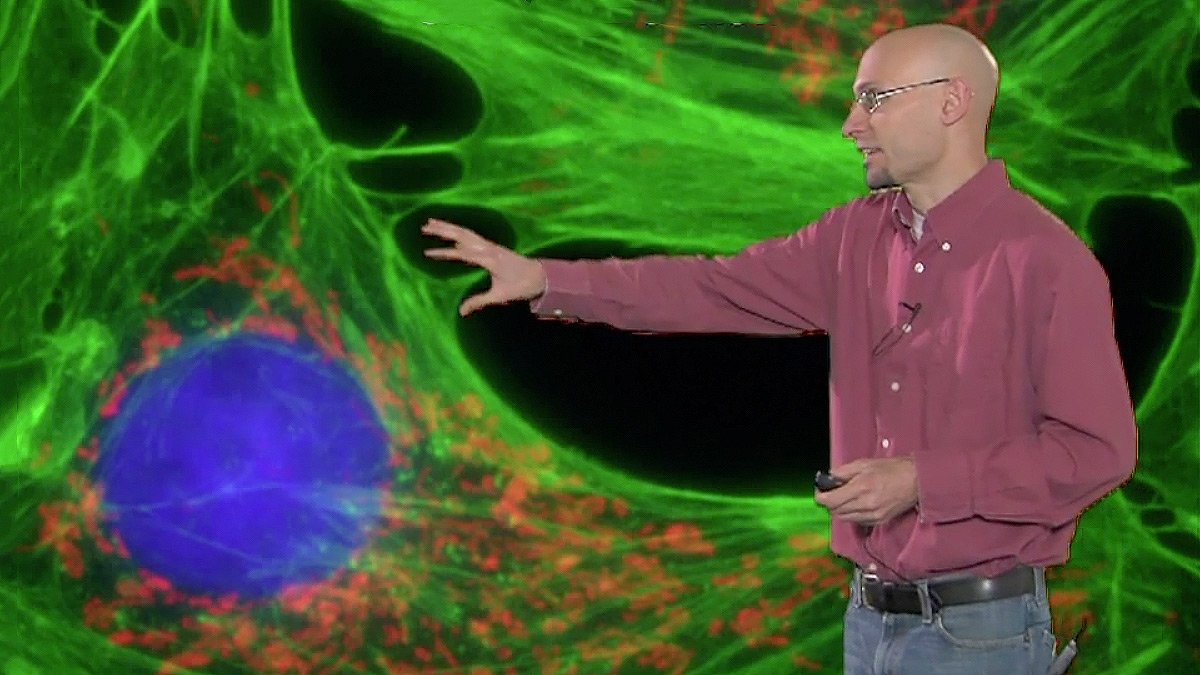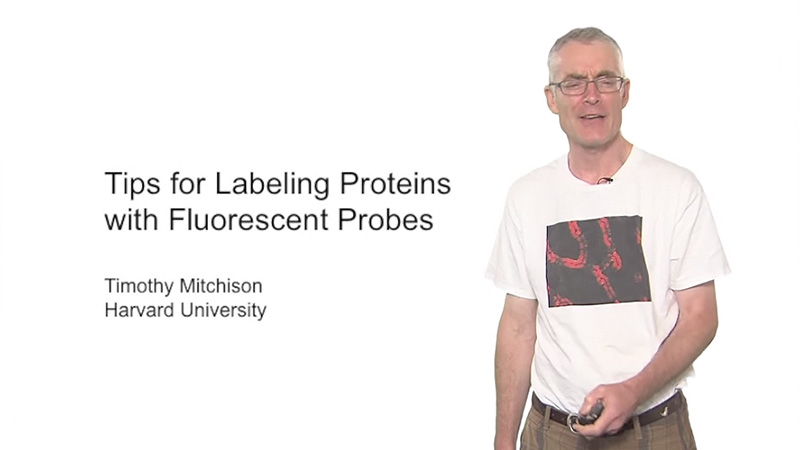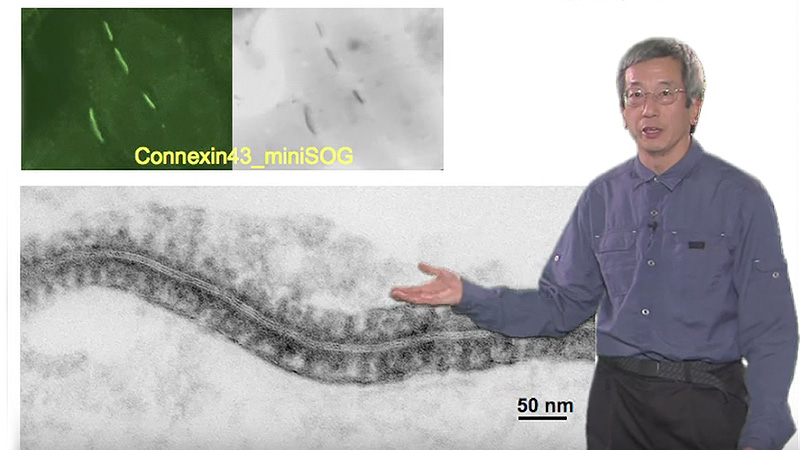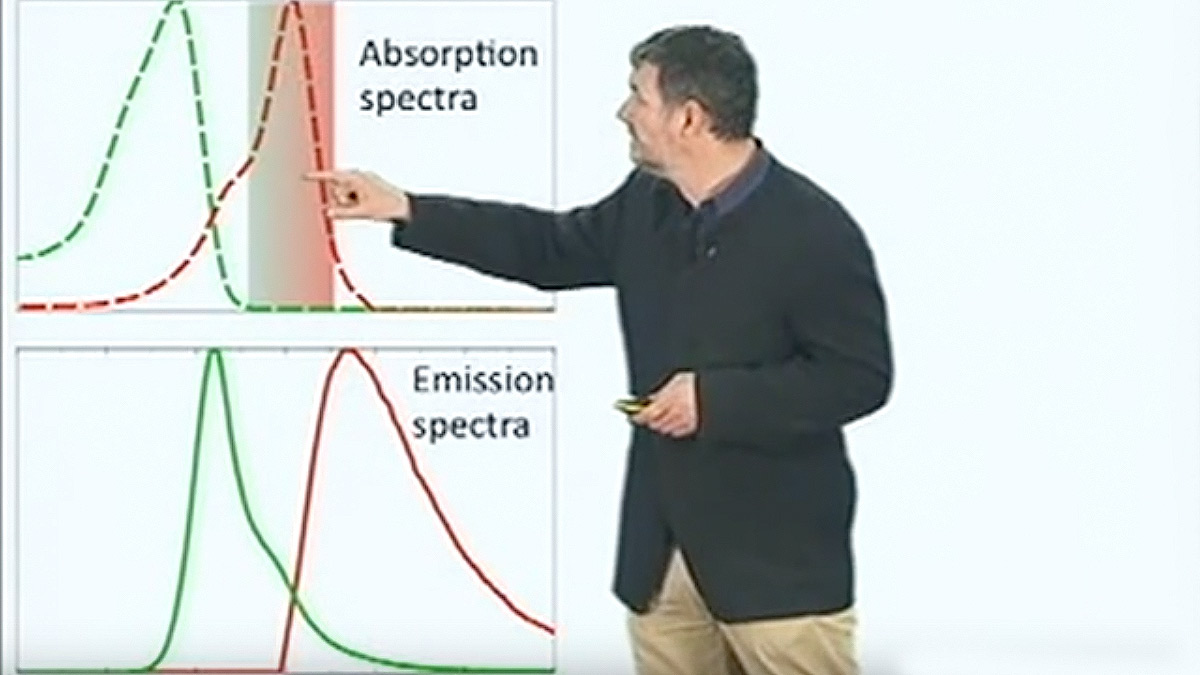Talk Overview
The fluorescence lifetime of a dye molecule is the amount of time that elapses between excitation of the dye and its emission of a photon. Fluorescence lifetime imaging is the technique by which this lifetime is imaged and can be done using either widefield or confocal (time correlated single photon counting) methods. The fluorescence lifetime of a dye depends both on the dye and on the environment surrounding the dye. Because of this, FLIM can be a sensitive probe for environment as well as FRET. This lecture discusses fluorescence lifetime, microscopes used to image it, and some biological applications of FLIM.
Questions
- The lifetime of a fluorophore usually is characterized by:
- A Linear distribution
- A single exponential decay
- Multiple exponential decays
- A Gaussian distribution
- To estimate the fraction of donor fluorophores undergoing FRET, one needs to:
- Extract from the measured decay the decay characteristic for donor alone and the decay for the donor undergoing FRET
- Subtract the donor alone lifetime from the measured lifetime
- Divide the measured lifetime by the lifetime of the donor alone
- Divide the measured lifetime by the lifetime of the donor undergoing FRET
- Fluorescence lifetime can be measured using:
- A gated detector that measures photon arrival time after excitation
- Oscillating the intensity of excitation and sensitivity of the detector
- Both A and B
- A stopwatch
- To use a fluorescent protein (FP) as a donor in FRET measurements using FLIM, it is important that:
- the FP’s lifetime shows mono-exponential decay
- the FP’s lifetime show multi-exponential decay
- the FP is the brightest available
- the FP matures fast
- In frequency domain FLIM, the phase lifetime and modulation lifetime are:
- identical for fluorophores with mono-exponential lifetime
- unrelated
- different for fluorophores with multi-exponentials lifetimes
- both A and C
- Homodyne detection is:
- use of a gated detector to measure photon arrival times
- Measurement of homo-FRET
- Using the same frequency for camera sensitivity and excitation intensity
- Use of a PMT with only a single dynode
Answers
View AnswersSpeaker Bio
Philippe Bastiaens

Philippe Bastiaens is Director of the Department of Systemic Cell Biology at the Max Planck Institute of Molecular Physiology and a Professor at the Technische Universitat Dortmund. Bastiaens and his colleagues have developed special fluorescence microscopy techniques such as FLIM and FRET, and use them to explore protein signaling pathways. Continue Reading









Ruth Wilhelm says
Hello, I study medical engineering at the TU Darmstadt and I have to hold a presentation about FLIM. I really liked your video and some of the graphs in it. Could I maybe get access to the slides to use them in my presentation?
That would be really helpfull! But even if its possible, thank you for the great video!